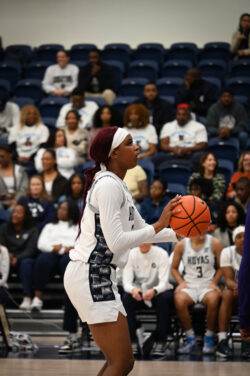Through the joint efforts of middle-school social studies teachers and Mel Gibson’s nuanced filmmaking, the ancient Mayan blood sport Pok-A-Tok has become infamous as the most brutal athletic pursuit in history. Modern day rugby, found right here on Georgetown’s campus, however, may just give the fellows from Chichen Itza a run for their money.
Rugby originated in the land of Twiggy and Shakespeare. England hasn’t been successfully invaded since 1066, so in lieu of fighting wars, the Brits invented other forms of entertainment; colonization and rugby caught on best.
Modern rugby was first played in 1823 at The Rugby School, when, as legend has it, an enterprising young man by the name of William Webb Ellis caught a ball in his arms during a soccer game and proceeded to run with it, perpetrating a gross infraction of the rules and giving birth to a new and exciting sport. Following in this maverick tradition, modern rugby has retained all the charms of its chaotic beginnings; virtually every play involves grabbing and pushing that would be deemed fouls in most other sports
This past Saturday, Georgetown and Catholic University met in a holy war on Harbin Field, playing to advance to the finals of the Potomac Rugby Union league. It’s the fifth time in the past six years that the Hoyas have made a playoff appearance.
In the tense moments leading up to the game, players stretched, wrestled along the sidelines and fidgeted with their high socks and short-shorts (a cultural nod to the sport’s European origins). The crowd of dozens spotting the stands clapped with anticipation and somewhat bemused excitement, as many referred to their programs for explanations of the sport’s basic rules.
As the predecessor of American football and a classic field sport similar in strategy to soccer and field hockey, many elements of rugby should appear familiar to the average sports fan. The more exotic facets of the game manifest themselves in the acrobatics of a line-out, during which a man from each team is lifted into the air, an attempt to gain possession of a thrown ball, and the scrum, in which the ball is put into the “tunnel” of players and pushed back through a series of chaotic motions before a player retrieves it and sends it into play.
Georgetown’s squad dominated the home field during the 15-5 win on Saturday, led by the stand-out offensive efforts of sophomore Phillip Cooney. Saturday’s match marked Cooney’s return to play after a break from participation due to a swirling hate-crime controversy in which he is accused of assault. Coach J.P. Perez appeared thrilled with Cooney’s combined ten points and said the team “gave [Cooney] a lot of support” throughout the past weeks.
Lightheartedness marked the game for the most part; at one point a fan decked-out in an elaborate Scooby-Doo costume could be seen roaming the sidelines. Family and friends also showed up to support the Hoyas in their playoff run, including Marney Cooney, who came from Texas to watch her son play.
“I’m worried about everyone on the field,” Cooney said as Georgetown players roamed the sidelines, some sporting bloodied shorts and makeshift arm splints fashioned out of shirts and towels. “Not just my own child.”
The Hoyas go on to play Salisbury University this Sunday in Quincy, Pa., and hope to bring back a championship. One thing is for sure: Georgetown’s ruggers will miss their home-field peanut gallery. Sitting in the stands wrapped against the autumn chill, a Hoya enthusiast betrayed the blood-lust often aroused by rugby as she indignantly watched a Catholic player swerve to avoid an oncoming player.
“He just ducked! There’s no ducking in rugby!”




